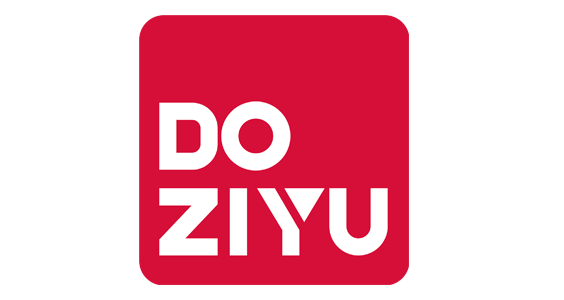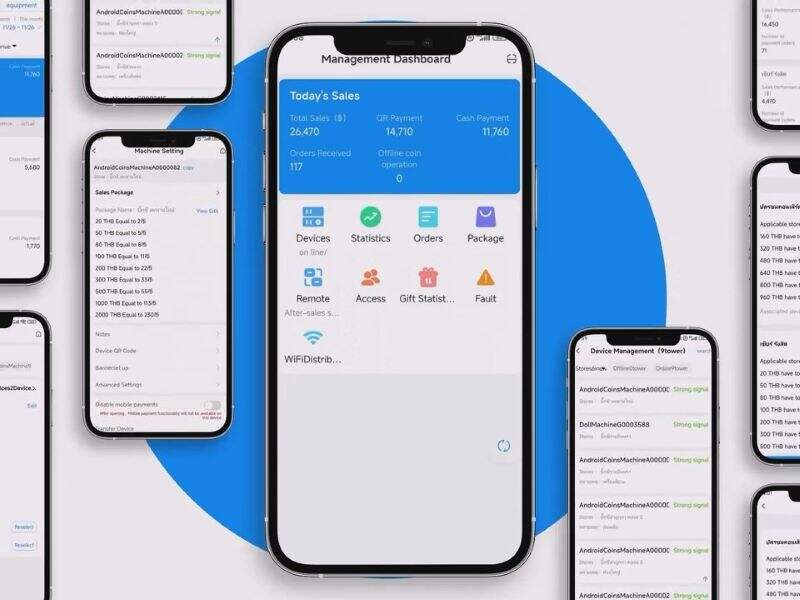Enhanced Operational Control Through Real-Time Remote Monitoring
Real-time monitoring of vending machines improves visibility across distributed networks
With remote monitoring systems in place, operators can keep track of everything from cashless transactions to sales patterns and how healthy the machines are at all their different locations. Take capsule vending machines in coffee shops for instance these days, the system spots when coffee beans are running low about 83 percent quicker than someone checking manually according to MHI research from 2023. The live updates let managers send restocking crews to the right spot just in time, so customers don't end up disappointed when their favorite drink isn't available. This kind of proactive management makes a big difference in keeping business running smoothly across multiple sites.
Integration with cloud-connected systems streamlines operational oversight
Modern management platforms sync sales data from IoT-enabled capsule dispensers with POS systems and inventory databases. This integration allows cafe owners to automatically adjust procurement orders based on real consumption patterns, reducing overstocking of specialty coffee capsules by up to 34%.
IoT sensors enable proactive decision-making with live inventory and performance data
Coffee bean hopper and grinder temperature sensors send out warnings when parts start acting up outside their normal operating range. The vibration monitoring systems built into capsule vending machines can actually spot potential motor problems about two weeks before they happen, so technicians can swap out worn components right during routine maintenance checks. A recent test run on 120 machines showed this tech cut down on emergency repair calls by around 40%, according to findings published last year in the Journal of Retail Automation. That kind of predictive maintenance saves both time and money for operators.
Centralized dashboards provide unified access to multi-location device performance
A single interface now tracks critical metrics for cafe vending operations:
- Real-time capsule sales by flavor/roast type
- Payment terminal connectivity status
- Bean storage humidity levels
Operators using these dashboards improved decision speed by 30% while reducing site visits . The system automatically prioritizes alerts based on business impact, focusing attention where it matters most.
Optimized Inventory Management Reduces Stockouts and Waste
Modern remote management systems transform inventory control for capsule vending machines in cafes through four key mechanisms:
Remote monitoring of stock levels and sales tracking enables accurate inventory forecasting
IoT-enabled sensors track product consumption patterns in real time, while cloud-connected platforms analyze historical sales data to predict demand spikes. This reduces the risk of understocking popular items by 34% compared to manual tracking (DSI optimization studies, 2024).
Automated restocking alerts prevent overstocking and eliminate shortages
When inventory dips below predefined thresholds, the system triggers purchase orders to suppliers and schedules technician refills. Leading inventory management systems combine JIT principles with machine learning to balance stock levels across multiple locations.
AI-driven analytics for consumer behavior improve product placement in capsule vending machines for cafes
Algorithms analyze time-of-day preferences and local taste profiles to optimize shelf allocation-"positioning espresso capsules near morning commuter zones, while reserving afternoon slots for flavored varieties.
Real-time inventory tracking reduces manual audits by up to 60%
Cloud dashboards provide granular visibility into every pod and ingredient, eliminating the need for physical stock checks. This accuracy prevents 82% of waste from expired products in perishable vending applications.
Remote Diagnostics and Predictive Maintenance Minimize Downtime
Remote diagnostics detect issues before machine failure occurs
Smart vending machines equipped with IoT technology keep tabs on important parts such as payment mechanisms and cooling systems, spotting strange behavior in things like compressor cycles or unusual motor vibrations. According to a recent industry report from 2023, when these machines can diagnose problems remotely, they cut down on surprise breakdowns by around two thirds in self-service retail setups because issues get caught before they become big problems. For those little capsule machines we see in coffee shops everywhere, built-in temperature sensors will alert operators whenever conditions go beyond what's safe for keeping coffee fresh and tasty. This means cafe owners don't have to guess if their machines are working properly anymore.
Predictive maintenance extends vending machine lifespan by up to 30%
By analyzing historical performance data, modern systems schedule part replacements during off-peak hours-"fan motors at 18,000 operational hours or bill validator rollers after 500,000 transactions. This proactive approach prevents cumulative damage, with field tests showing 27-"34% longer service life for IoT-equipped devices compared to conventional models.
Reduced need for onsite technician visits lowers service and labor costs
Automated error resolution handles 83% of common issues like bill jams or network connectivity problems remotely. Operators report 45% fewer technician dispatches, cutting $18,000-"$22,000 annually in service contracts for medium-sized vending fleets. Voice-guided self-repair protocols enable staff to fix 67% of remaining issues without specialized training.
Balancing automation with human oversight in fault resolution
While AI handles routine diagnostics, complex mechanical failures still require technician expertise-"particularly in high-traffic cafA environments where capsule vending machines process 300+ daily transactions. Hybrid systems escalate only critical alerts (compressor failures, security breaches) to human operators, maintaining 99.1% uptime without overloading staff.
Real-Time Reporting and Remote Updates Improve Service Reliability
Real-time reporting identifies recurring failure patterns and service bottlenecks
The latest vending management systems collect detailed operational information that helps operators spot problems such as broken payment components or temperature swings inside those capsule machines found in coffee shops. Looking at patterns from error messages and maintenance records allows companies to fix bigger issues before they spread to other machines. Take door sensors for instance these little gadgets seem to go wrong about 18 out of every 100 times something breaks down according to industry reports. Getting ahead of these kinds of troubles saves money and keeps customers happy when their favorite snacks actually come out of the machine.
Instant alerts reduce mean time to repair (MTTR) through faster issue resolution
Getting automated alerts through text messages or emails cuts down how long it takes for someone to respond when something goes wrong. Studies show these automatic notices can cut response times nearly two thirds compared to old fashioned manual reporting methods. Imagine a scenario where equipment spots problems like a stuck conveyor belt or running out of refrigerant. Instead of waiting for someone to notice, techs get detailed info about what's broken along with suggestions on fixing it right away. Field testing has shown some pretty impressive results too. Repairs that used to take around four hours are now getting done in less than ninety minutes most of the time according to recent trials across different facilities.
Seamless remote software updates ensure compliance and consistent feature deployment
CafA© operators have the ability to push out security fixes, update menus, or change prices all at once across their entire network of hundreds of devices. According to research published last year in an IoT connectivity report, companies that implemented these wireless updates saw a dramatic drop in regulatory issues - around 42% fewer problems actually - because they stopped making those costly mistakes from hand configuring each device individually. The system automatically schedules these software upgrades when foot traffic is low, sending them through secure connections so customers never notice any downtime while grabbing their morning coffee or afternoon snack.
Remote Price Adjustments and Promotions Boost Revenue Flexibility
Dynamic Pricing Adjusts to Demand, Seasonality, and Time-of-Day Trends
Smart vending machine owners are starting to play around with real time sales numbers and predictive models to tweak their pricing strategies on the fly. They typically jack up coffee pod prices anywhere from 12 to 15 percent during those busy morning hours when everyone's rushing out the door, but then slash them by 20% come afternoon time. Makes sense really, since we've seen similar buying habits in actual cafes too. Most folks grab their drinks well before ten o'clock in the morning, something that recent hospitality industry reports back up with those eye popping stats showing over half (like 63%) of all beverages sold happen early in the day.
Case Study: CafA© Chain Increases Capsule Vending Machine Sales by 22% Using Time-Based Pricing
One local coffee shop chain decided to try something different with their 85 capsule vending machines spread throughout various cafes. They started using smart pricing strategies that changed based on the time of day and included some bundle offers too. During those busy morning rush hours when people are scrambling to get out the door, they charged $1.49 for individual espresso shots, which was actually a 14% markup compared to regular prices. But come around 2pm, things got interesting with their special "buy two, pay for two" deal that really worked well. The discounted coffee blends sold out fast during these afternoon hours, hitting about 37% utilization. What's impressive is how this approach cut down on wasted stock by nearly 20%, and each machine brought in roughly $127 extra profit every week. Not bad for a little experiment in dynamic pricing!
FAQ
What is the benefit of real-time remote monitoring for vending machines?
Real-time remote monitoring enhances visibility across distributed networks by allowing operators to track cashless transactions, sales patterns, and machine health, leading to efficient management and reduced downtime.
How do cloud-connected systems improve operational control?
Cloud-connected systems integrate sales data from capsule dispensers with POS and inventory databases, enabling automatic adjustment of procurements based on actual consumption, thus reducing overstocking.
How does IoT technology contribute to vending machine maintenance?
IoT sensors enable proactive decision-making by monitoring inventory and performance data, predicting motor problems before they occur, and reducing emergency repair calls, enhancing predictive maintenance.
How can dynamic pricing strategies impact vending machine sales?
Dynamic pricing adjusts based on demand and time-of-day trends, allowing operators to increase prices during peak hours and offer discounts during off-peak times, boosting sales and reducing stock waste.
Table of Contents
-
Enhanced Operational Control Through Real-Time Remote Monitoring
- Real-time monitoring of vending machines improves visibility across distributed networks
- Integration with cloud-connected systems streamlines operational oversight
- IoT sensors enable proactive decision-making with live inventory and performance data
- Centralized dashboards provide unified access to multi-location device performance
-
Optimized Inventory Management Reduces Stockouts and Waste
- Remote monitoring of stock levels and sales tracking enables accurate inventory forecasting
- Automated restocking alerts prevent overstocking and eliminate shortages
- AI-driven analytics for consumer behavior improve product placement in capsule vending machines for cafes
- Real-time inventory tracking reduces manual audits by up to 60%
- Remote Diagnostics and Predictive Maintenance Minimize Downtime
- Real-Time Reporting and Remote Updates Improve Service Reliability
- Remote Price Adjustments and Promotions Boost Revenue Flexibility
- FAQ

 EN
EN
 AR
AR DA
DA NL
NL FI
FI FR
FR DE
DE EL
EL HI
HI IT
IT JA
JA KO
KO NO
NO PL
PL PT
PT RU
RU ES
ES SV
SV TL
TL IW
IW ID
ID VI
VI HU
HU TH
TH TR
TR MS
MS GA
GA LO
LO MY
MY